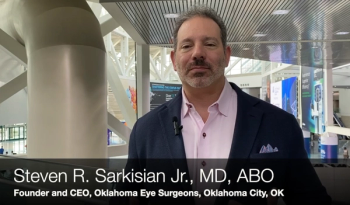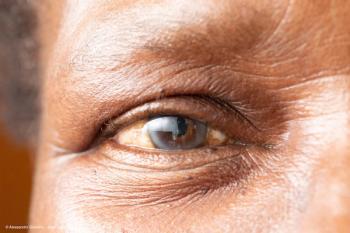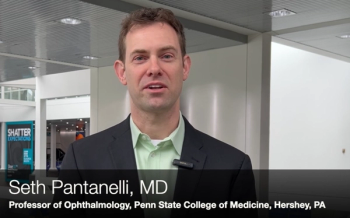
The preservative-free, contact lens–friendly drops have been formulated to provide hydration and comfort for dry eyes in a multidose bottle.

The preservative-free, contact lens–friendly drops have been formulated to provide hydration and comfort for dry eyes in a multidose bottle.

A study reveals attrition rates in patients with geographic atrophy on complement inhibitor therapies, highlighting the need for improved treatment adherence strategies.

Centennial Optical distributes ophthalmic frames, eyeglass lenses, sunglasses, lab supplies, and optical accessories.

Boyer discusses a potential treatment for diabetic retinopathy and macular degeneration using suprachoroidal injections, offering reduced risks and improved outcomes.

VG801 is a dual AAV gene therapy that leverages mRNA trans-splicing via the vgRNA REVeRT and vgAAV platforms to deliver the full-length ABCA4 gene for Stargardt disease and related retinal disorders.

OCU400 is Ocugen’s novel modifier gene therapy for retinitis pigmentosa (RP).

Areas covered by the agreement would cover key Asian marketplaces, including Japan and China.

IVMED-85 is a preservative-free, non-atropine daily drop that slows myopia progression by strengthening scleral and corneal collagen crosslinks via LOX activation.

Weighing the benefits and trade-offs of preserved versus preservative-free glaucoma treatments is key to optimizing long-term patient care.

Retinal vascular change or degeneration already has been associated with Alzheimer and Parkinson disease, and the findings suggest that neurologic diseases impact ocular health.

At the 2025 ASCRS meeting, Dr. Sarkisian presented 3-year data on the iDose TR from the FDA clinical trial.

Prevent Blindness offers resources for Cataract Month, empowering patients and caregivers with knowledge on cataracts and surgery options.

The FDA has set a Prescription Drug User Fee Act (PDUFA) date of January 28, 2026.

A recent US Court of International Trade decision was made on May 28 to permanently prohibit all tariffs imposed by President Donald Trump under the International Emergency Economic Powers Act.

Telomir-1 shows promising results in restoring vision and retinal structure in age-related macular degeneration, marking a significant advancement in treatment.

SpyGlass Pharma secures $75 million in Series D funding to enhance its innovative drug delivery platform for long-term glaucoma management.

Discover how ellipsoid zone integrity predicts geographic atrophy growth rates in recent clinical trials, enhancing future treatment strategies.

The trial will evaluate AXPAXLI in at least 555 patients in a multi-center, double-masked, randomized (2:2:1), 3-arm study.

The phase 3 trial observed the treatment of chronic night driving impairment in keratorefractive patients with reduced mesopic vision.

The drug has been reported previously to cause neuropathy and hypersensitivity reactions in breast cancer patients.

At ARVO 2025, in Salt Lake City, Utah, Emma Lessieur-Contreras, MD, PhD, talked about her poster on retina extracellular vesicles, and the role that they play on diabetic retinopathy.




Deep Parikh, MD, sat down with Emily Kaiser Maharjan from Optometry Times to talk about his presentation at Collaborative Care Symposium on advanced treatments in neovascular retinal disease.

At ARVO 2025, in Salt Lake City, Utah, Carly Lam, PhD, MSc, and Tsz Wing Leung, PhD talked about the evaluation of the visual performance of 2 modified DIMS spectacle lens designs.

Investigators were surprised by the outcome of a comparison between the Eyhance and enVista IOLs in low-light conditions.

The Retina World Congress showcases global innovations in surgical and medical retina, highlighting emerging treatments and fostering collaboration among specialists.

Sharon Fekrat, MD, FACS, FASRS, highlights the critical importance of networking and collaboration in the medical field, particularly in ophthalmology.

Lori Wright, JD, sat down to talk about a discussion at Collaborative Care Symposium about the risk under federal statutes and how to minimize that risk as an optometrist or an ophthalmic practice.